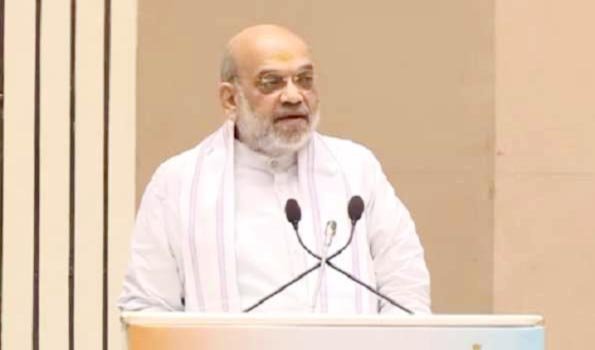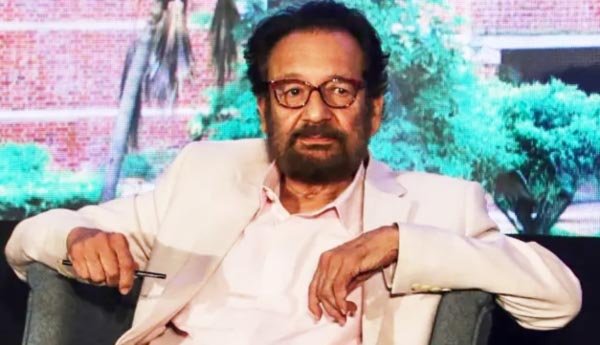New Delhi, June 16 (UNI) Union Home Minister Amit Shah on Monday emphasised the need to adopt a zero-casualty approach in the face of disasters, asserting that while the country is well-prepared to handle such situations, it must also address their root causes.
Addressing the annual conference of relief commissioners and disaster response forces of states and Union Territories, Shah identified climate change and global warming as the primary drivers of natural disasters, calling for environmental conservation to be made an integral part of disaster mitigation strategies, a Home Ministry statement said.
“Climate change and global warming are the primary causes of disasters, and therefore, we must move forward with environmental conservation as a core component,” Shah said.
He highlighted the significant efforts made over the past 11 years, including the launch of Mission LiFE (Lifestyle for Environment), the proposal for the creation of “Pro-Planet People,” and India’s key role in establishing the International Solar Alliance and the Global Biofuel Alliance.
Shah also underlined India’s contributions to global disaster risk reduction, citing Prime Minister Modi’s 10-point agenda, the formation of the Coalition for Disaster Resilient Infrastructure (CDRI), and the establishment of a G-20 task force on disaster risk reduction.
“Without environmental conservation, it is impossible to completely prevent disasters,” Shah said, adding that protecting the environment is essential to safeguarding the future.
During the conference, Shah asked every relief commissioner to prepare a district disaster management plan for their districts in their state within 90 days, stating that “until a district has its disaster management plan in place, we cannot respond swiftly in the face of a disaster”.
He further emphasised that a lightning action plan also needs to be formulated soon.
Highlighting that several states are yet to implement the Incident Response System, Shah added, “The Central government has allocated a good budget for the expansion and modernisation of fire services as well. NDMA has issued 38 guidelines and 34 Standard Operating Procedures (SoPs) on cross-cutting areas, and it is important that these reach the district level”.
He said that a strong action plan should also be developed to tackle heat waves, and its timetable should be based on the actual experience of heat conditions. He mentioned that the government has also formulated several plans for the future.
“We want to make inter-state mock drills an annual programme, and this would not be possible without the cooperation of the states. We also want to link Start-up India with the development of disaster relief technology. We have undertaken the task of training one lakh community volunteers, 20 percent of whom are women. Alongside this, we have launched the Yuva Aapda Mitra (Young Disaster Friends) scheme with an investment of Rs 470 crore,” the Home Minister said.
Shah said that in the past 10 years, 5the government has achieved several milestones in the field of disaster management.
“In 2018-19, we also announced the Subhash Chandra Bose Aapda Prabandhan Puraskar (Disaster Management Award). Every state should send nominations for this. For National Cyclone Risk Mitigation, we have worked successfully in Odisha and Andhra Pradesh. The NDRF has also been strengthened — its strength has increased from eight battalions in 2006 to 16 battalions today. In addition, the NDMA has also initiated night-time mock drills in Leh-Ladakh”.
The Home Minister said that due to climate change and global warming, the entire world is grappling with disasters today. He said that in the past 10 years, because of the contributions of the National Disaster Management Authority (NDMA), the National Disaster Response Force (NDRF), and the Coalition for Disaster Resilient Infrastructure (CDRI), India is moving towards becoming a global leader in the field of disaster management.
He highlighted that NDMA has done commendable work in policy frameworks, research, disseminating various training materials, developing apps, and overall coordination.
Adding that NDRF has earned nationwide recognition, built a strong reputation, and gained respect. The State Disaster Response Force (SDRF) has also played a significant role in this structure.
Shah said that whenever the history of India’s disaster response is written, these 10 years of the Modi government will be recorded as a transformative decade.
He said that in the past 10 years, the government has achieved significant milestones in the four areas of capacity building, speed, efficiency, and accuracy in disaster management.
“Not only has our capacity to handle disasters been increased, but it has also been enhanced and extended to the tehsil level. Attention has been given to speed, as saving lives during a disaster is of utmost importance,” Shah said.
The Home Minister noted that efficiency has been improved through the use of cutting-edge technology and the dedicated approach of disaster response forces. Additionally, by providing accurate forecasting and early warnings, society has been made aware and successfully engaged in relief and rescue operations.
He said that during the Modi government’s tenure, there has been a significant shift in the approach related to disaster management. Earlier, the approach was relief-centric, but today, the goal of ‘zero casualty’ has been successfully achieved, and the focus has shifted from relief-centric to a comprehensive and integrated approach.
Highlighting the achievements in the development of early warning systems, Shah said, “Timely preparedness has been integrated with the calendar, a scientific approach has been evolved for active prevention and mitigation, and we have also achieved significant success in disaster risk reduction”.
He said that by pursuing the goal of ‘Minimum Casualty’, the government has amazed the entire world by achieving the target of ‘Zero Casualty’ in 10 years.











